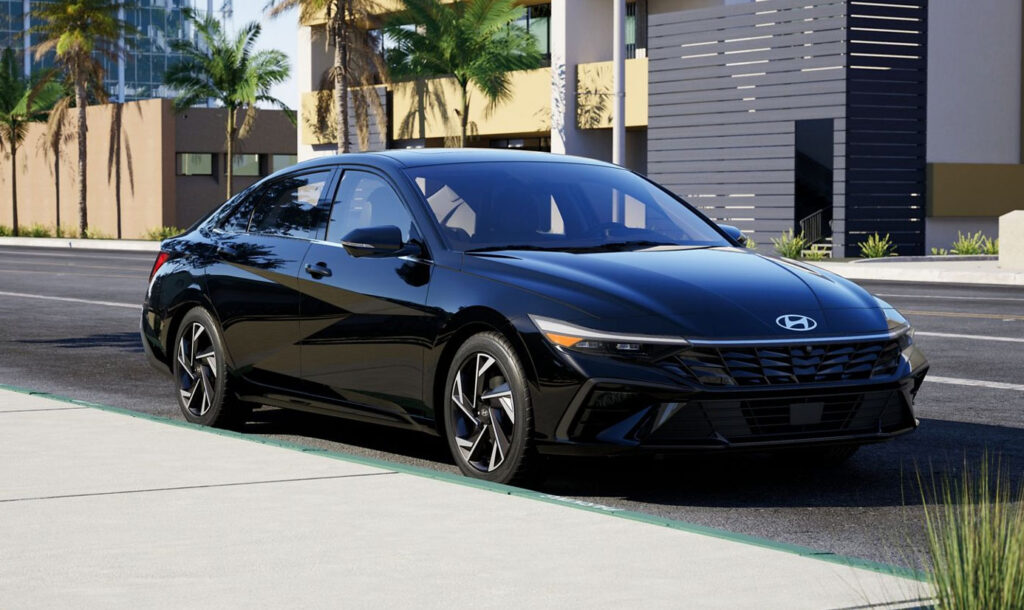Choosing the right car for a teen driver is a critical decision that requires careful consideration of several factors. Safety, reliability, affordability, and ease of driving are paramount when selecting a vehicle for a young and inexperienced driver. In this comprehensive guide, we will explore the key aspects to consider when choosing a car for a teen driver, helping you make an informed decision that balances peace of mind with your teen’s preferences.
Prioritizing Safety
Safety should be the primary concern when choosing a car for a teen driver. Modern vehicles come equipped with a range of safety features designed to protect occupants in the event of an accident and help prevent accidents from occurring in the first place.
Essential Safety Features
- Anti-lock Braking System (ABS): ABS prevents the wheels from locking up during hard braking, maintaining traction and allowing the driver to steer.
- Electronic Stability Control (ESC): ESC helps maintain control of the vehicle during extreme steering maneuvers by reducing the risk of skidding.
- Airbags: Ensure the car has front, side, and curtain airbags to provide comprehensive protection in the event of a collision.
- Traction Control: This system prevents wheel spin during acceleration, especially on slippery surfaces, enhancing stability.
- Backup Camera: A backup camera aids in reversing and parking, reducing the risk of collisions with obstacles or pedestrians.
- Forward Collision Warning (FCW): FCW alerts the driver of an impending collision with a vehicle ahead, giving them time to react.
- Automatic Emergency Braking (AEB): AEB automatically applies the brakes if a collision is imminent and the driver doesn’t react in time.
- Lane Departure Warning (LDW): LDW alerts the driver if the vehicle begins to drift out of its lane without signaling.
Crash Test Ratings
Always check the crash test ratings of any vehicle you are considering. Organizations like the National Highway Traffic Safety Administration (NHTSA) and the Insurance Institute for Highway Safety (IIHS) conduct rigorous testing and provide safety ratings. Aim for vehicles that have high ratings in all categories.
Considering Reliability
A reliable car is essential for a teen driver to ensure that they can travel safely without frequent breakdowns or maintenance issues. Reliable vehicles are less likely to leave your teen stranded and can save money on repairs in the long run.
Research Reliability Ratings
Consult reliability ratings from trusted sources such as Consumer Reports and J.D. Power. These organizations provide detailed insights into the long-term reliability of various makes and models based on owner surveys and historical performance data.
Choose Proven Models
Opt for models that have a track record of reliability. Popular choices often include compact and midsize sedans from brands known for their durability and low maintenance costs, such as Toyota, Honda, and Subaru.
Evaluating Affordability
The cost of the vehicle is a significant factor for most families. When considering affordability, it’s important to look beyond the initial purchase price and consider the total cost of ownership, which includes insurance, fuel, maintenance, and depreciation.
Budgeting for the Car
Set a budget that includes the purchase price and additional costs such as taxes, registration, and dealer fees. Determine whether you will buy new, used, or certified pre-owned. Each option has its pros and cons in terms of cost, warranty, and potential maintenance issues.
Insurance Costs
Insurance premiums can be high for teen drivers due to their inexperience. Opt for cars that are known to have lower insurance rates. Generally, vehicles with high safety ratings, moderate engine sizes, and lower theft rates are less expensive to insure.
Assessing Ease of Driving
For a teen driver, the ease of driving and maneuvering the vehicle is crucial. A car that is too powerful, large, or difficult to handle can be intimidating and increase the risk of accidents.
Size and Power
Choose a car that is easy to handle and maneuver. Compact and midsize sedans are often ideal for new drivers because they provide good visibility and are easier to park. Avoid high-powered sports cars or large SUVs that can be more challenging to control.
Driver Assistance Features
Modern cars come with various driver assistance technologies that can help new drivers. These features include adaptive cruise control, blind-spot monitoring, and parking sensors. Such technologies can aid in safer driving practices and build confidence.
Considering Fuel Efficiency
Fuel efficiency is another important factor, especially for budget-conscious families and environmentally aware teens. A fuel-efficient car reduces the overall cost of ownership and has a lower environmental impact.
Hybrid and Electric Options
Consider hybrid or electric vehicles if your budget allows. These cars offer excellent fuel economy and lower emissions. Models like the Toyota Prius or Honda Insight are known for their reliability and fuel efficiency.
Exploring Used vs. New Cars
Deciding whether to buy a new or used car for your teen involves weighing the pros and cons of each option.
New Cars
- Pros: New cars come with the latest safety features, technology, and warranties. They typically require less immediate maintenance and repairs.
- Cons: Higher purchase price and significant depreciation in the first few years.
Used Cars
- Pros: Lower purchase price, slower depreciation, and potential savings on insurance. You can get a higher-end model for less money.
- Cons: Potential for higher maintenance costs and the need for thorough inspection to avoid buying a lemon.
Certified Pre-Owned (CPO) Cars
Certified pre-owned cars offer a middle ground between new and used cars. They come with manufacturer warranties and have undergone rigorous inspections. CPO cars can provide peace of mind at a lower cost than a new vehicle.
Practicality and Lifestyle Considerations
The car you choose should suit your teen’s lifestyle and practical needs. Consider factors such as:
- Cargo Space: Ensure the vehicle has enough trunk space for their needs, whether it’s for school sports equipment or luggage for road trips.
- Technology and Connectivity: Teen drivers appreciate modern technology features like Bluetooth connectivity, USB ports, and infotainment systems. These features can also enhance safety by allowing hands-free communication.
- Comfort and Interior Space: A comfortable driving experience is important, especially if your teen will be using the car for long drives. Check for ample legroom, comfortable seating, and user-friendly controls.
Building Responsible Driving Habits
Choosing the right car is just one part of ensuring your teen’s safety on the road. It’s also important to instill responsible driving habits and ensure they understand the responsibilities that come with driving.
Driver Education
Enroll your teen in a reputable driver education program. These programs provide valuable knowledge and practical experience that can build confidence and improve driving skills.
Setting Ground Rules
Establish clear rules for driving, such as limiting the number of passengers, setting curfews, and prohibiting the use of mobile phones while driving. Encourage open communication and discuss the importance of obeying traffic laws and being mindful of other road users.
Monitoring and Feedback
Consider using technology to monitor your teen’s driving habits. Many insurance companies offer apps or devices that track driving behavior and provide feedback. These tools can help identify areas for improvement and promote safer driving practices.
Top Car Recommendations for Teen Drivers
Here are some top car recommendations that balance safety, reliability, affordability, and ease of driving:
Toyota Corolla
- Pros: High reliability ratings, excellent fuel efficiency, and a comprehensive suite of safety features.
- Cons: Some may find the design conservative compared to more stylish competitors.

Honda Civic
- Pros: Known for its reliability, fuel efficiency, and a variety of safety features. Available in both sedan and hatchback models.
- Cons: Slightly higher insurance costs compared to some competitors.

Subaru Impreza
- Pros: Standard all-wheel drive, high safety ratings, and solid reliability. Available in sedan and hatchback versions.
- Cons: Lower fuel efficiency due to all-wheel drive.

Mazda3
- Pros: Sporty handling, attractive design, and a range of advanced safety features. High safety ratings.
- Cons: Slightly less rear-seat space compared to some competitors.

Hyundai Elantra
- Pros: Excellent warranty, good fuel efficiency, and a range of modern safety features. Competitive pricing.
- Cons: Some may find the ride quality a bit firm.

Ford Focus
- Pros: Good handling, available in sedan and hatchback versions, and a range of safety features. Affordable pricing.
- Cons: Lower reliability ratings compared to some competitors.

Choosing the right car for a teen driver is a multifaceted decision that requires careful consideration of safety, reliability, affordability, ease of driving, and fuel efficiency. By prioritizing these factors and involving your teen in the decision-making process, you can select a vehicle that provides peace of mind and meets their needs.
Remember to consult trusted sources for reliability and safety ratings, consider the total cost of ownership, and take the time to test drive multiple options. By doing so, you can ensure that your teen driver starts their driving journey with a vehicle that is safe, reliable, and suitable for their lifestyle.




